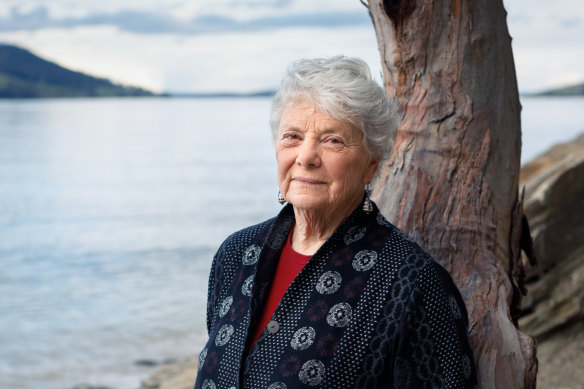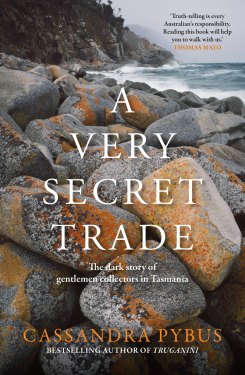
HISTORY
A Very Secret Trade: The Dark Story of Gentleman Collectors in Tasmania
Cassandra Pybus
Allen & Unwin, $34.95
This is a disturbing and, at times, heart-wrenching study of an appalling practice that was long shrouded in silence. Throughout much of the 19th and early 20th centuries, the skulls of Indigenous Tasmanians were exhumed from burial sites, stolen from morgues and autopsy tables and retrieved, after decapitation, from random killings and targeted expeditions.

Cassandra Pybus became physically sick when examining the archives in one museum.Credit: Peter Mathew
These skulls were highly prized because, it was erroneously believed, Indigenous Tasmanians were more primitive and distinctive than peoples on the mainland and, most importantly, were on the edge of extinction.
The dismembered heads and skeletal remains were harvested by settlers, surgeons, “naturalists” and government officials and sent or sold to royal societies, museums, university anatomy departments, and private collectors.

Cassandra Pybus is a well-established historian.
This atrocity was not random or isolated. It was, Cassandra Pybus tells us, “a systematic process baked into the colonial project from the very beginning”. Much of it was clandestine: little of the prolific trade was listed in official customs records, sales and donations were unrecorded, and the origins of the displays in British museums and elsewhere were never revealed. The “gentlemen” perpetrators knew, then, this trade was illegally sourced and ethically unsound.
Much money passed hands between London and Hobart, more so if an Aboriginal skeleton were intact and authenticated. Possession guaranteed status and standing to the institution in the British scientific community. Possession also provided self-aggrandising individuals with leverage to enter eminent scientific bodies as “fellows”. Those medical men of 19th century science – anthropologists, anatomists, eugenicists and phrenologists – were all complicit.

Truganini’s skeleton was eventually cremated in 1976 and scattered in the waters off Bruny Island.
Cassandra Pybus is a well-established historian who lives close to the site – Oyster Cove in south-eastern Tasmania – where frequent pillaging of graves and mutilations of bodies occurred. Her research often left her “haunted” as well as aghast. When examining the archives of one museum, her reaction was visceral. She became physically ill, “so sickened that I had to leave”. For the reader, too, parts of A Very Secret Trade are harrowing.









 Add Category
Add Category